Text
My voice in the background story: my PhD thesis preamble
[This section is the opening on my submitted PhD thesis, under examination atm]
I am a woman and mother from the south, born and raised in the state of Chiapas, Mexico. Since childhood, my family and I have often visited San Cristóbal de las Casas, a picturesque city surrounded by hills, that maintains its Spanish colonial layout and architecture, with red tile rooves, cobblestone streets, and wrought iron balconies, often strewn with flowers. This city is still considered the culture capital of the state due to its history and Indigenous population.
Visiting the mercado (market) of Santo Domingo was an important part of our weekend trips. This outdoor market remains a colourful display of Indigenous crafts surrounding the beautiful eponymous church, and its side chapel Templo de la Caridad. The stalls are filled with creative and ancestral traditions such as textiles, embroidery, saddlery, basketry, jewellery, and stones. Over the years, I became consciously aware of how the motifs, colours and styling of the displayed garments were evolving. I also started to notice the emergence of crafts from other Latin American countries, now contrasting with mass-produced pieces from Mexico, Latin America and Asia. I started my studies as an industrial designer, and these changes became increasingly evident, further piquing my interest in the development, quality, making and meaning of crafts. It turned into an obsession. I regret not keeping all of the garments acquired since I was a child, or at least not taking pictures of them to retain a visual record of the evolution.
After graduating and working for a couple of years, I moved to Spain to do a master’s degree in design management and product development. In the coloniser’s land, I questioned many things about identity, race, ethnicity, gender roles, social inequalities, migration, and colonisation, amongst others; it was a face-to-face encounter with my “otherness”. Until that point, I had been a middle-class Mexican mestiza woman. Living in Europe made me discover that I was a Latina, a “Sudaca” (pejorative term for South Americans), and a migrant, and I had to unlearn the conditioned “pursuit of civility” and make a firm decision to root myself better in my own land and culture.
Back in Mexico, I got my first job in design education, married, and continued to “follow the script” for a woman of my age and socio-economic status. But I dreamt of collaborating with Indigenous communities to “help them improve” their work in things like quality, standardisation, and the creation of new products that were more suitable to a contemporary lifestyle. I was certain design could impact their crafts and communities in a positive way, and because of this, I wanted to co-ordinate designer-artisan collaborations around the world. This led me to apply for a Japan International Cooperation Agency (JICA) scholarship for the training programme in Modern Design and Traditional Craftsmanship in Japan, which I was fortunate to obtain. In 2009, I spent nine months under the tutorship of Yamamoto sensei from the Kyoto Institute of Technology, and was awed by the beauty of making Japanese crafts under such distinguished masters. The result of this programme was the creation of a design guide for artisans in Mexico in collaboration with my two fellow design kenshuin (trainee). We blended the Japanese learnings, observations, design, creativity, and ways of making crafts, with traditional Mexican games, to make the design process enjoyable, familiar and non-invasive.
Life continued on my return to Mexico, and my daughter was born in 2011. The same year, we moved to Singapore (where I could not legally work), for my former husband’s job, away from family and friends. I learned to be a mother, and an “ex-pat” wife, largely in isolation. There were multiple challenges in this new land, but travelling around South East Asia kept me afloat. In my disconnection from home, exploring culture and crafts became my focus and saviour. The contrast between Singapore’s affluence and the neighbouring “underdeveloped” countries further ignited my sense of social justice and fuelled a desire to walk alongside those communities. After three years in Singapore, fortunately, an opportunity to go to New Zealand emerged, and we moved again.
The many journeys through various countries, cultures, and identities, shifted my views of crafts, which, despite my conventional design training, I now considered as art. I was more interested in the artisanal communities, and their understandings and ways of embracing heterogeneity, rather than standardisation and universalisation, and the exploration of links between art-design-crafts to nature-culture, as well as the importance of creative-art practices to individual and collective well-being.
Life’s challenges continued.
In July 2015, I started a part-time lecturing position in the School of Art and Design at Auckland University of Technology, and in March 2016, I was accepted into a PhD programme. It was also the month my marriage ended. The support of Dr Amanda Bill, my manager and supervisor support, at that time was crucial. After a few months, I took leave from my PhD while I taught more hours to support myself and my daughter, and applied for a Vice-Chancellor’s scholarship, of which I was an incredibly blessed recipient. I restarted the research journey in January 2017. During my PhD years, institutional and life changes impacted my research, resulting in a change of faculty from Design and Creative Technologies to Te Ara Poutama – my current whare (house) - where I was warmly welcomed. I have had five official supervisors and one non-official one, due to my change of faculty. I have learned from the words and actions of all of them.
I have been fortunate to attend many Māori and Indigenous research and design events in Aotearoa-New Zealand, Australia, and Canada, sharing with other “mixed” Indigenous people like myself. From them I learned that mixed ancestry does not erase our Indigenous heritage, and one identity is not exclusive to the other, but rather, they co-exist.
Parallel to the PhD life, and ignited by life’s struggles as an “ethnic migrant solo mother”, I started to volunteer in community projects, particularly in the Latin American community. I was invited to be a board member for a non-for-profit organisation working with refugees and migrants using design and co-design; I participated in forums and conducting workshops; I returned to creative and activist practice through textiles; I co-founded the Buen Vivir women’s collective and joined the Sororidad Latina group, involving my daughter in everything. Using art and textiles, I joined public demonstrations against racism after the March 15th terrorist attack in Christchurch. I fought gender and diversity inequality in design, climate change, and denounced femicide in Latin America to mention only a few.
While the past four years have been transformational professionally and personally, I understand these are but a series of short cycles in a life-long journey. In some ways, I consider this PhD to be the formal approach to a topic that has always been an incredibly pivotal component of my heritage, and central to my life: namely, culture through art-design-crafts, particularly textiles. I am fortunate and grateful that this part of my identity can form the basis of PhD research. I have learned much about this from mis compañeras of Malacate Taller Experimental Textil (independent textile collective and research partners), Mayan artists and scholars, and their embodied experiences of knowing, doing and connecting. Bonding with these wise women who live/practise their ancestral knowledge has been a true privilege. Nevertheless, the lived experiences of being Indigenous and the onto-epistemic guidance from tangata whenua (people of the land) in Aotearoa, from my supervisor, and research and design whānau (family/community), all contributed significantly to this research.
Throughout these years, I have learned much about myself, to understand my processes as a primarily sentipensante being, and to accept, respect, balance, embrace, and use it positively. I could understand I am someone who feels first, strongly and deeply, needing to let the emotions emerge. However, dealing with people, balancing the emotions of the heart with the reasoning of the mind, to question, understand, and process my feelings, is paramount. I learned I must comprehend other peoples’ emotions, listen to their stories, make sense of their backgrounds, and establish connections from a place of empathy, from the heart. Most importantly, I learned that after the processes of feeling and thinking, the final decision needs to make sense, to have meaning, and for this, it needs to come from the heart. For me, being corazón is not the romantic view of love where everything is positive. Yollotl (corazón in Náhuatl, one of my ancestors’ languages) is emotions; anger, sadness, happiness, fear, to mention some, but it is also the source of courage, passion and peace.
Many transformations have happened in Aotearoa, Latin America and around the world, that have shifted old ways of knowing and doing, towards new possibilities. The Latin American movements in Bolivia, Ecuador, Colombia, Venezuela, Brazil, Chile, Haití, Argentina, and México, have inspired and triggered me to participate and contribute whenever and however I can.
At this point, I say I am a mother, a feminist, an activist, a researcher from the south (re)connecting with indigeneity. I am sentipensante, I am Yollotl, I am uno con el todo (one with the whole). This is my truth.
This work is dedicated to my sisters, brothers and third spirits in Cemanáhuac (the Americas), to weavers and anyone familiar with the language of the threads; to women, to mothers (especially solo mothers), to my feminist sisters, a mis hermanas de AbyaYala, a mis sororas…
Con todo, si no, ¿pa´qué? (Give it everything, otherwise, what’s the point?)
(Feminist chant)
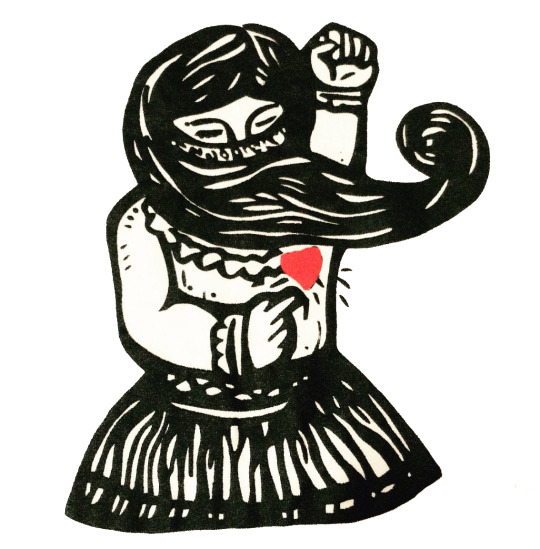
#PhD#phd thesis#phd life#phd research#Buen Vivir#feminist#south#nativelatinamerican#latin america#abya yala#indigenous#indigenous studies#decolonisation#decolonial#decolonize#design#decolonisingdesign#woman#mother#native#latina#sororidad#sorority#sentipensante#corazón#corazonar#heart#yollotl#epistemologiesofthesouth#mexico
1 note
·
View note
Photo

I ❤ my nerd hole #PhDLife #PhDResearch #Design #Research #DesignResearch #DecolonisingDesign #Decolonisation #Decoloniality #Indigenous #IndigenousDesign #Mayan #Textiles #Chiapas #BuenVivir #LekilKuxlejal #EZLN #Zapatista #Mexico #Aotearoa #Corazonar #Corazonando #Sentipensante #MujeresConLaDignidadRebelde (at AUT - Auckland University of Technology) https://www.instagram.com/p/B2xdh6YjJ-e/?igshid=14d3gpvmxpmbs
#phdlife#phdresearch#design#research#designresearch#decolonisingdesign#decolonisation#decoloniality#indigenous#indigenousdesign#mayan#textiles#chiapas#buenvivir#lekilkuxlejal#ezln#zapatista#mexico#aotearoa#corazonar#corazonando#sentipensante#mujeresconladignidadrebelde
0 notes
Photo
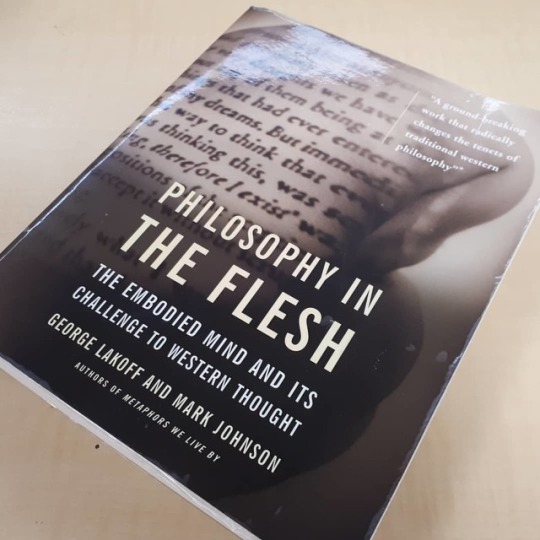
#PhDResearch #Embodiment #BeyondTheMind #Sentipensante #SensingThinking #BodyMindHeartSpirit #OtherPhilosophies #FromTheSouth #WaysOfKnowing #WaysOfBeing (at AUT - Auckland University of Technology) https://www.instagram.com/p/B1Csz2Oj184/?igshid=1sjj595x0gh6a
#phdresearch#embodiment#beyondthemind#sentipensante#sensingthinking#bodymindheartspirit#otherphilosophies#fromthesouth#waysofknowing#waysofbeing
0 notes
Photo

Loving my comfy long dress from @kibeltik #IndigenousDesign #ArtisanalTextiles #ArtisanalDesign #Chiapas #MayanTextiles #TextilesMayas #Mexico #JolobilStories #NewZealand #Aotearoa (at Auckland, New Zealand) https://www.instagram.com/p/ByjxGTNjfTP/?igshid=943u7np3p2jn
#indigenousdesign#artisanaltextiles#artisanaldesign#chiapas#mayantextiles#textilesmayas#mexico#jolobilstories#newzealand#aotearoa
0 notes
Photo
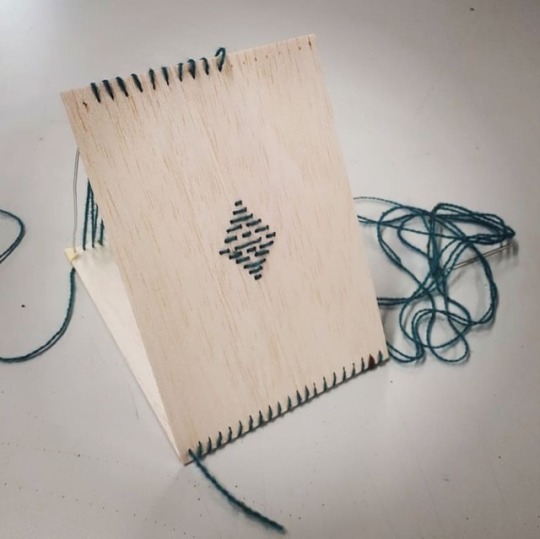
I was fortunate to attend @elizabethkoz workshop related to her research "Textile and priviledge: Decolonizing institutional spaces and practices". It was a hands-on/craft making/conversations session to explore mementos. This is my unfinished piece, UNROOTED/INVISIBLE, a material representation on the tensions between Western hegemonic design and vernacular textiles from my region. It also represents the tension in mestizo identity, between the visible but unrooted Spanish side contrasting with the invisible but grounded Indigenous side. This is a scale model of a larger piece I want to make. Thanks you, Elizabeth, for creating a safe space for sharing and making. #Decolonizing #Craft #Design #Art #Identity #Mestiza #Indigenous #Textiles #Mexico #NewZealand #Aotearoa #Chiapas #Decolonizingdesign #PhDResearch #PhD #PhDJourney (at AUT Faculty Art and Design) https://www.instagram.com/p/ByXJ1vlDC9_/?igshid=ta184uq8lume
#decolonizing#craft#design#art#identity#mestiza#indigenous#textiles#mexico#newzealand#aotearoa#chiapas#decolonizingdesign#phdresearch#phd#phdjourney
1 note
·
View note
Video
Mayan textiles as books, valuable source of knowledge. 3D representation of the intersection of textile patterns + Mayan cosmology + time #MeLuch #Cosmovisión #Cosmology #Mayan #Maya #MayanUniverse #UniversoMaya #Textiles #TextilesMayas #MayanTextiles #SpiralTime #TiempoEspiral #Tiempo #CosmovisionMaya #ArbolSagrado #Ceiba #PhDResearch #PhD #3DPrinting #Design https://www.instagram.com/p/ByDuzfmjw5H/?igshid=fe6wkim8n9ck
#meluch#cosmovisión#cosmology#mayan#maya#mayanuniverse#universomaya#textiles#textilesmayas#mayantextiles#spiraltime#tiempoespiral#tiempo#cosmovisionmaya#arbolsagrado#ceiba#phdresearch#phd#3dprinting#design
0 notes
Photo

Admiring First Nations material culture Anthropology museums lover #Canada #Vancouver #Museum #FirstNations #Totem #sunlightkiss (at Museum of Anthropology) https://www.instagram.com/p/Bx0K-d1Fk-a/?igshid=g9liy5edhvqk
0 notes
Photo
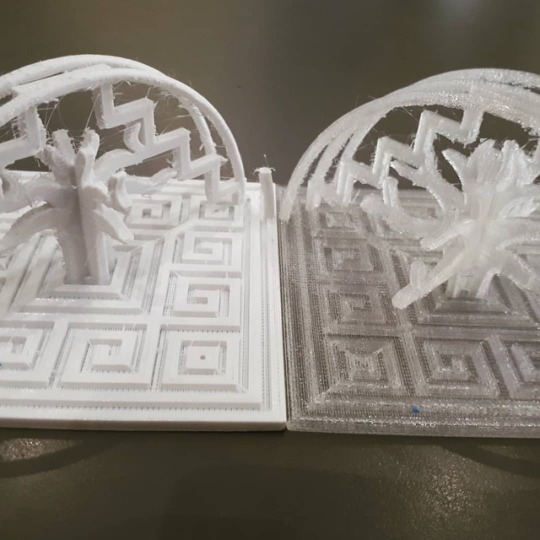
It's alive! Still needs a bit of cleaning but it's getting there. #3DPrinting #PhDResearch #Prototype #MayanCosmology https://www.instagram.com/p/BxeLjGFl4Xi/?utm_source=ig_tumblr_share&igshid=n0bygj3n18ew
0 notes
Photo
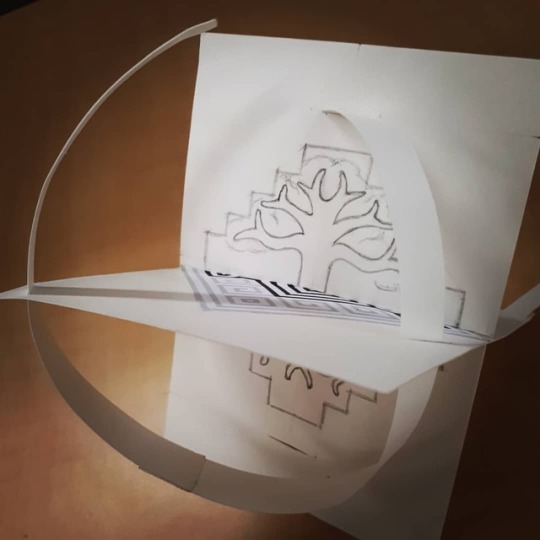
3D visualization aid for "tactile" reflection. Applying my "old school" Industrial Design skills to make a mock-up model of the research concept. #phdjourney #phdlife #PhDresearch #mayanuniverse #cosmovisionmaya #universomaya #textilesmayas #textiles #mayantextiles #time #tiempo #espiral #spiral #spiraltime https://www.instagram.com/p/BvOPsWelffX/?utm_source=ig_tumblr_share&igshid=1qidjzphy6fj
#phdjourney#phdlife#phdresearch#mayanuniverse#cosmovisionmaya#universomaya#textilesmayas#textiles#mayantextiles#time#tiempo#espiral#spiral#spiraltime
0 notes
Photo
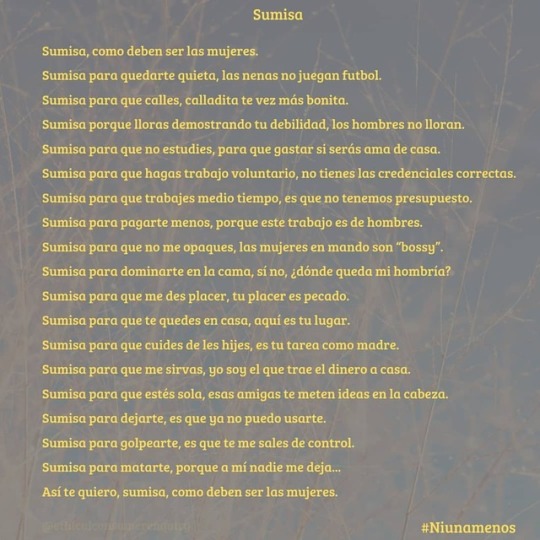
Cuando el enojo y frustración se vuelven palabras #sumisa #mujeres #niunamenos #feministas https://www.instagram.com/p/BucOawAFrsP/?utm_source=ig_tumblr_share&igshid=qari00dw4q4p
0 notes
Photo

Los #hilos de la #memoria The #threads of #memory Mary preparing the #jolobil. Memories with @malacate.malacate #backstraploom #backstrapweave #telardecintura #textilesmayas #mayantextiles #textiles #Zinacantán #Chiapas #Mexico #phdlife #phdjourney #indigenousknowledge https://www.instagram.com/p/BuD5mYbF3tW/?utm_source=ig_tumblr_share&igshid=1765ct1mmigzt
#hilos#memoria#threads#memory#jolobil#backstraploom#backstrapweave#telardecintura#textilesmayas#mayantextiles#textiles#zinacantán#chiapas#mexico#phdlife#phdjourney#indigenousknowledge
0 notes
Photo
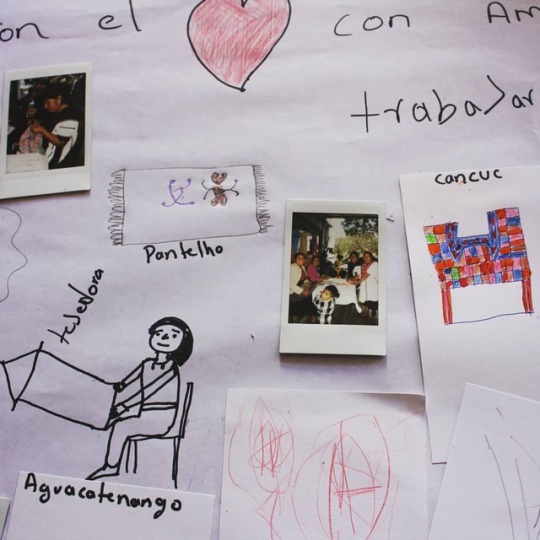
Work with the heart, with love. Teachings of Lekil Kuxlejal with @malacate.malacate Trabajar con el corazón, con amor. Enseñanzas del Lekil Kuxlejal with Malacate Taller Experimental Textil. #LekilKuxlejal #PhDresearch #jolobil #textiles #textilesmayas https://www.instagram.com/p/Bt2xNddFDDQ/?utm_source=ig_tumblr_share&igshid=16m5tzwvlk68f
0 notes
Photo
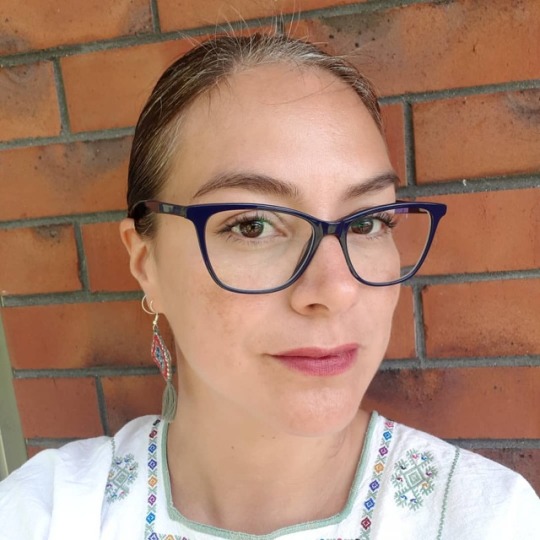
I have been thinking about this post for long time. I am not a selfie fan and I was very self-conscious on going public on my transformation and self-acceptance journey, but I decided it is the right time, something I need to do for myself. I have been "struggling" with my grey hair for more than a decade, part of my family inheritance, and I have tried to stop dyeing a couple of times but went back to "the safety" of dark colours. I heard comments about grey hair from other women such as it is like you don't love and take care of you, or don't do that to yourself because you will look old. I have also been reading about patriarchy and its effects on women, different types of feminism, and questioning my identities. I know there is a cult to youth influencing the way we should look, the ideal woman "young, skinny but curvy, tall, white, trendy and good make up". The reality is that most women in the world are not like this, that those images are bombarded to us through mass media to make us "fit", to consume beauty products, fashion items, diets and so on. We end up feeling bad about ourselves when we realise we can't fit those standards. I consider myself to be against societal impositions...but also realised these go deep inside into our psyche and are not evident. We need to search and fight them from within, to accept and love us just the way we are, to be kind and patience with ourselves and understand it is a journey not a destination. I write these words as a reminder to myself in a time of need of support, healing and self love. This is a small part of my journey, to demonstrate myself and the world that grey hair is beautiful and common at many ages (for gorgeous examples check @grombre) even though we don't see it. Mum, you taught me this and thank you for being an example. Let my greys grow free! #goinggrey #grombre #acceptance #selflove #greyhair #silverhair https://www.instagram.com/p/BtauIRnlzk6/?utm_source=ig_tumblr_share&igshid=1xx5ilzawv64r
1 note
·
View note
Photo

I missed this gorgeous ceremonial huipil from Magdalenas Aldama dressing my PhD space, woven in backstrap loom by the talented master @luchetik. Still summer school holidays in Aotearoa - New Zealand but good to be back instead of working from home. Can't wait to wear it for a special occasion :) Extrañé este hermoso huipil ceremonial de Magdalenas Aldama engalanando mi espacio de doctorado, tejido en telar de cintura por el maestro Alberto López Gómez. Aún son vacaciones de verano en Aotearoa - Nueva Zelanda, pero se siente bien estar de regreso en vez de trabajar desde casa. No puedo esperar para portarlo en una ocasión especial :) #backstraploom #telardecintura #Magdalenas #Aldama #Chiapas #Mexico #AldamaChiapas #Mayan #textiles #mayantextiles #textilesmayas #textilelover #hechoamano #handmade #indigenousdesign #diseñoindígena #GiveCredit #PhD #phdlife #phdjourney #PhDresearch #diseño #design (at AUT - Auckland University of Technology) https://www.instagram.com/p/Bs4KleRlBwB/?utm_source=ig_tumblr_share&igshid=xp0jj5srdz0y
#backstraploom#telardecintura#magdalenas#aldama#chiapas#mexico#aldamachiapas#mayan#textiles#mayantextiles#textilesmayas#textilelover#hechoamano#handmade#indigenousdesign#diseñoindígena#givecredit#phd#phdlife#phdjourney#phdresearch#diseño#design
0 notes
Photo

Long time since I posted pictures of my artisanal pieces. Here is the most recent and a piece with a lot of meanings. This huipil was done by Teresa Vázquez, a tsotsil weaver from Zinacantán with whom I jointly gave a talk last November and with the anthropologist @namaste.karla, both members of @malacate.malacate. This design is called Xelak'uul, inspired by a ceremonial cloth used in her community. Who can say Indigenous artisans are not designers and artists by their own right, knowledge and skill? Largo tiempo desde que compartí una foto de mis prendas artesanales. Esta es la más reciente, una pieza con muchos significados. Este huipil fue tejido por Teresa Vázquez, con quién di una charla el pasado noviembre al igual que con la antropóloga Karla Pérez, ambas parte de Malacate Taller Experimental. Este diseño llamado Xelak'uul está inspirado en un mantel ceremonial que usan en su comunidad. Quién puede decir que las artesanas indígenas no son diseñadoras y artistas por su propio derecho, conocimiento y habilidad? #huipil #artesanal #hechoamano #handmade #telardecintura #backstraploom #diseñoartesanal #diseñoindígena #artisanaldesign #indigenousdesign #artisanaltextiles #textilartesanal #Tsotsil #Zinacantán #Chiapas #Mexico #wearyourculture #givecredit #viernestradicional (at Auckland, New Zealand) https://www.instagram.com/p/Bsv4WsDFGP8/?utm_source=ig_tumblr_share&igshid=rnkmjek4wsz0
#huipil#artesanal#hechoamano#handmade#telardecintura#backstraploom#diseñoartesanal#diseñoindígena#artisanaldesign#indigenousdesign#artisanaltextiles#textilartesanal#tsotsil#zinacantán#chiapas#mexico#wearyourculture#givecredit#viernestradicional
0 notes
Photo
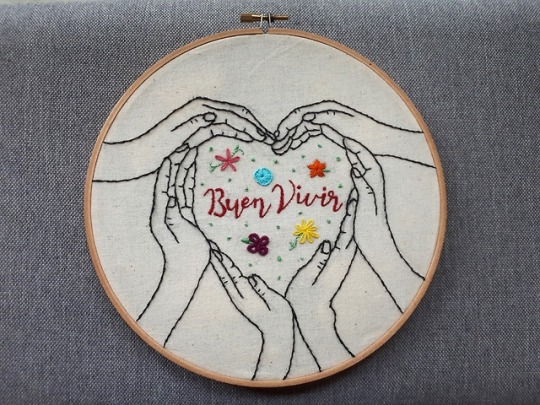
It has been a long time since the last time I actually write a post in this platform rather than sharing from Instagram. The purpose of this page was to write reflections about the PhD but also about life in general. As a new year resolution, I will start this year (January 1st) writing a reflection here.
Honestly, I find the end of the year holidays quite distressing. I am not a big fan of Christmas and especially New Year. I can’t avoid becoming very reflective about the past year, the good and the bad. Perhaps because I am away from my family and I recently came back from Mexico after a month of field research, these days are extremely tough, I was in a very bad mood. I could feel the black dog on top of me, hijacking my time away from writing and my daughter even though she was next to me. The only thing I desperately wanted was a break, to disappear.
Yesterday was especially difficult, I couldn’t stop thinking about the sensation of feeling alone (my daughter left that morning to spend new year’s eve with her dad). I was feeling that everything in my life was a problem, that nothing made sense. I started questioning every single detail in my life, what is the purpose of a PhD? Why am I living in a country so far from my family? Why do we still exist as humans after all the bad things we do to the earth and each other? I didn’t want to leave my bed, in fact, I spent many hours wasted browsing my phone with no purpose, just trying to get lost, to see if that could keep my mind shot. In the end, I forced myself to get up, take a shower and go grocery shopping to cook dinner for a party with dear friends...but I was feeling so lonely.
Anyways, I won’t go into details about last night, which was nice by the way, especially seeing the fireworks in Sky City for the first time. This morning, I decided to start the day differently, trying to start the year differently, to keep fighting the black dog. Maybe yesterday was particularly bad because I was afraid of 2019 to arrive. You see, 2018 was a good year regarding the PhD with two fabulous field trips to Chiapas, which means I have all the data I need, and it is my favourite part of the research since involved interacting with people and the weavers from Malacate and staying with my family in San Cristobal de las Casas, I place I love.
This 2019 though, it will be a totally different story. I have to write a lot, really a lot, since I have until August to get the written thesis and it is the last month of my scholarship. After that, I have no idea what I will do to survive since I am not teaching anymore (long story, which I will write another time). Honestly, I am scared. My anxiety levels get to the top only by remembering this, F!@%^*($!!!
Well, coming back to the purpose of this post and the picture posted, I decided to finish this piece for myself, as a present to me for this new beginning. Buen Vivir has been a major point of my research and my life. It “describes a way of doing things that is community-centric, ecologically-balanced and culturally-sensitive”, a philosophy present in many Indigenous cultures in the world with different names. In Los Altos de Chiapas, the context of my research and where my parents live, Lekil Kuxlejal rendered as fair dignified life is the equivalent. This has been the central theme explored in my last field trip. But not only that, it has triggered deep changes within me, my way of seeing and doing things, to question many things around me and in my life, the purpose of why we do things. See the connection? It is also related to my black dog.
So, I wanted to start this new year pursuing the Buen Vivir to myself, to my friends, to my family, to everyone. To focus on the blessings and work with my black dog, acknowledge it but without letting him take control. To be the guidance, a sign of hope, of inspiration to change things, to construct new possibilities and ways of living, being and sharing.
#buen vivir#new year#2019#embroidery#heart#flowers#blossom#hands#handmade#bordado#corazon#flores#floreciendo#manos#hechoamano
9 notes
·
View notes